I recently deployed my website on IIS (LocalDB). But whenever I try to run the website, the SQL fails to connect. I've been through hundreds of posts/articles now but I am unable to resolve it.
Error
A network-related or instance-specific error occurred while establishing a connection to SQL Server. The server was not found or was not accessible. Verify that the instance name is correct and that SQL Server is configured to allow remote connections. (provider: SQL Network Interfaces, error: 50 - Local Database Runtime error occurred. Cannot create an automatic instance. See the Windows Application event log for error details. )
Windows Application event log
Windows API call SHGetKnownFolderPath returned error code: 5. Windows system error message is: Access is denied. Reported at line: 422.
Second log -
Cannot get a local application data path. Most probably a user profile is not loaded. If LocalDB is executed under IIS, make sure that profile loading is enabled for the current user.
My Connection Strings (tried both)-
<appSettings>
<add key="ConnectionString" value="Data Source=(LocalDB)\MSSQLLocalDB;Initial Catalog=test;Integrated Security=True" />
<!--<add key="ConnectionString" value="data source=(LocalDB)\MSSQLLocalDB;UID=SOME_USERNAME;PWD=SOME_PASSWORD;initial catalog=test;connection timeout=30"/>-->
</appSettings>
I tried editing applicationHost.config.
Load User Profile was already True for me
My ApplicationHost.config file
<applicationPools>
<add name="Classic .NET AppPool" managedRuntimeVersion="v2.0" managedPipelineMode="Classic" />
<add name=".NET v2.0 Classic" managedRuntimeVersion="v2.0" managedPipelineMode="Classic" />
<add name=".NET v2.0" managedRuntimeVersion="v2.0" />
<add name=".NET v4.5 Classic" managedRuntimeVersion="v4.0" managedPipelineMode="Classic" />
<add name=".NET v4.5" managedRuntimeVersion="v4.0" />
<add name="ASP.NET v4.0" managedRuntimeVersion="v4.0">
<add name="DefaultAppPool" autoStart="true" managedRuntimeVersion="v4.0" managedPipelineMode="Integrated">
<processModel identityType="ApplicationPoolIdentity" loadUserProfile="true" setProfileEnvironment="true" />
</add>
</applicationPools>
DefaultApplicationPool -
EDIT -
Added IIS Apppool using
icacls c:\inetpub\wwwroot /grant "IIS APPPOOL\DefaultAppPool":(OI)(CI)(RX)
Still not able to connect.
Any help is appreciated.
I am on Windows 10 using Visual Studio 2015 with SQL Server 2016.



